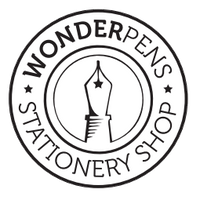When Fountain Pens Appear in Books: John Irving's A Widow for One Year

Meanwhile, back in the bookstore, Ted Cole was reaching calligraphic heights at the autographing table. His penmanship was perfect; his slow, seemingly carved signature was a thing of beauty. For someone whose books were so short - and he wrote so little - Ted's autograph was a labor of love. ("A labor of self-love," Marion had once described Ted's signature to Eddie.) To those booksellers who often complained that the signatures of authors were messy scrawls, as indecipherable as doctors' prescriptions, Ted Cole was the kind of autographers. There was nothing dashed-off about his signature, not even on checks. The cursive script was more like italicized print than handwriting. Ted complained about the pens. He had Mendelssohn hopping around the shop searching for the perfect pen; it had to be a fountain pen, one with just the right nib. And the ink had to be either black or the proper shade of red. ("More like blood than like a fire engine," Ted explained to the bookseller.) As for blue, any shade of blue was an abomination to Ted.Later on in the novel, Eddie, a teenager who was hired on to be Ted Cole's writing assistant for the summer, swipes one of Ted's fountain pens in order to forge Ted's signature in one his children's books. Unable to do so accurately, he has the good fortune to meet (once again) a clam truck driver who assists him, and to whom Eddie gives the fountain pen as thanks for his help. Eddie is clearly not a young man who knows what's what. I love the idiosyncrasies of those who play around with words, and who have their own personal preferences on the type of nib and ink colours to use - aren't we all familiar with that? I love Ted complaining about the pens, and then the explanation as to what the proper shade of red is, that assumption that it's not just about the shade of red he prefers, but indeed what is proper. We could help you out with that, Ted: Diamine Oxblood, maybe? In any case, I thought I would share just for fun. I find it such a delight to stumble across references to fountain pens, usually in older novels or books or movies set back in time, but especially this one, a bit of a light-hearted poke at Ted's peculiarities with his choice of writing instruments, the specificity down to the nib and ink colour that might seem funny to other people, but so understandable to folks like us. How else do you know if it's the pen for you?? The last thing I'll leave you with is a post from John Irving's Facebook page, which is definitely worth a follow. He shares news and articles, especially with on his writing or tours, but he also shares a hint of the behind the scenes of his writing, which I love. He has a cottage on Georgian Bay, with a little writing shack. According to one of my favourite storytellers of all time, all you need to write are "paper, pens, highlighters, clipboards." A good reminder for the times when I'm procrastinating with telling myself I just need this or that, or that I can't start righting until I find "just the right tools." I've copied and pasted his description of his writing shack here, in case you don't want to click to Facebook to read his entire description. The advice on tea is particularly useful.
John Irving on the perils of his writing shack: Readers, The massasauga rattlesnake has a range from the Great Lakes to Mexico. In Ontario, where my wife and I have a summer place—on one of the offshore islands in Georgian Bay, Lake Huron—the massasauga rattlesnake is common. Note the long stick leaning against the exterior wall of my workspace on the island. On those mornings when there’s a rattlesnake curled on the front step to the shack’s only door, I have to use the stick (very gently) to persuade the snake to let me in. Rattler or no rattler, the writing must go on. From inside the shack, you’ll see my writing table is rudimentary—all that’s necessary for someone who writes in longhand. Paper, pens, highlighters, clipboards. As I write, I have to be careful not to put a pen or highlighter in my mug of tea. —John




Comments
Anonymous said:
A murder weapon! What a multi-purpose tool, our fountain pens are. It’s always a delight to see fountain pens popping up here and there – I’ll have to check out Elementary!
Anonymous said:
Glad to find a kindred spirit! I’ve spent many happy hours in the pages of a John Irving book :)
Susan White said:
Thanks so much for posting this! John Irving is one of my favourite authors and A Prayer for Owen Meany is on my list of all-time favourite novels. I think I may now need to re-read A Widow for One Year!
Ruth E. Martin said:
It’s fun finding references to fountain pens on tv, too. In one episode of the series “Forever”, a fountain pen turns out to have been the murder weapon (the pen is mightier than the sword, after all). And an episode of “Elementary” featured a fountain pen and UV-flourescing invisible ink as vital clues to the murderer’s identity.